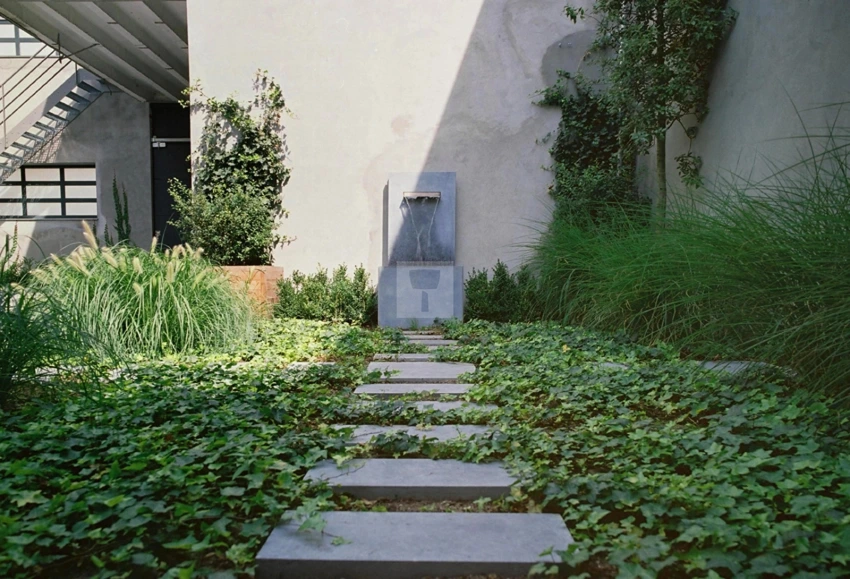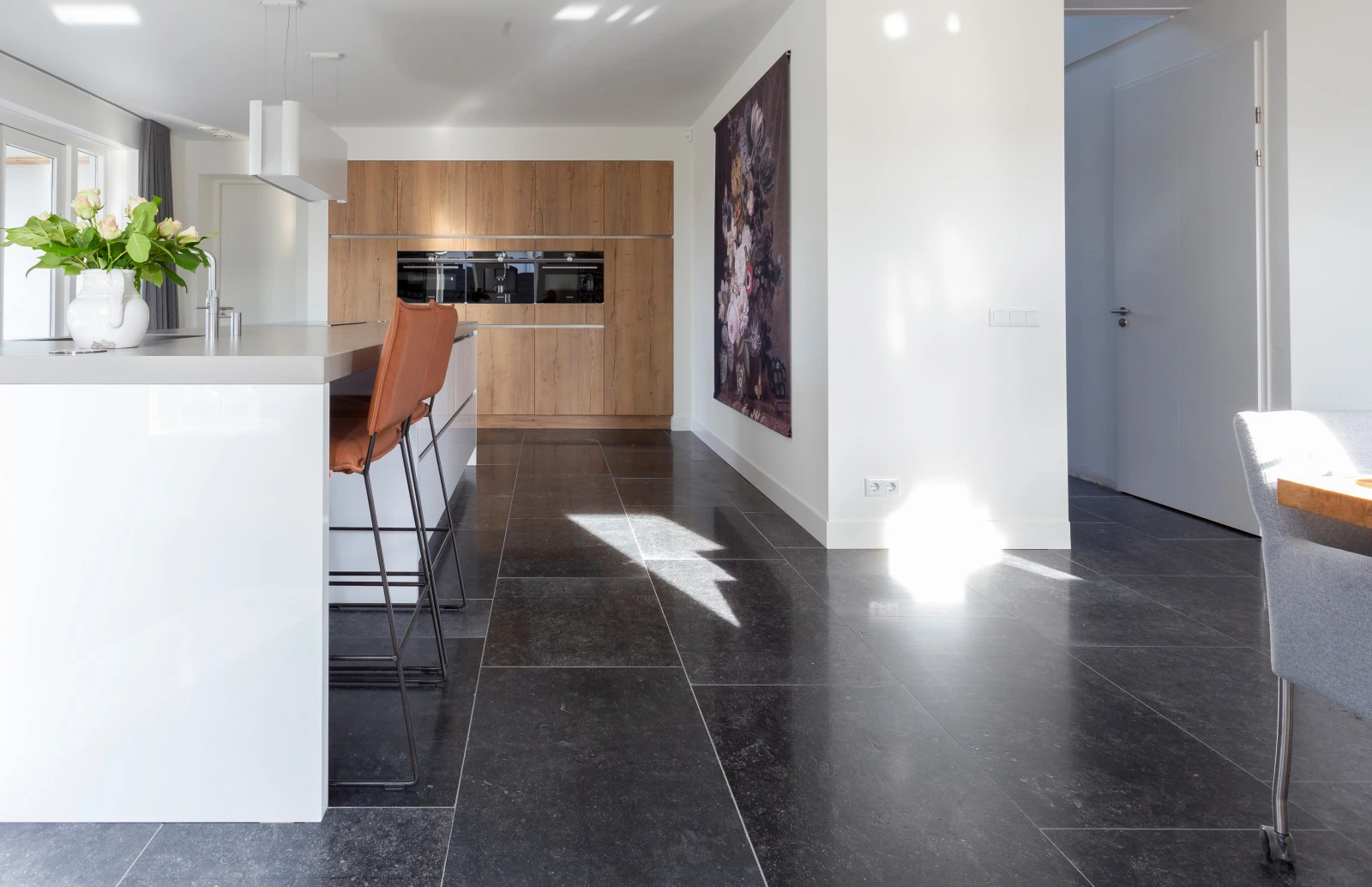Blog Article
The winners of the "Blue Stone Awards"
The 5 winning projects of the “Blue Stone Awards 2017” have been unveiled and awarded today - Friday September the 29th - during the Grand Award Ceremony at Marmomac, the international Stone & Design fair, in Verona, on the booth of Carrières du Hainaut. 5 creative concepts working with pieces of blue limestone usually rejected because of their specific features, proving it is possible to explore blue limestone in a new way.
Blue Limestone of Hainaut, a non-porous natural limestone, has established itself as one of the premier building and design materials in the world, mainly because of its enduring quality. Beauty and perfection are often associated with each other. But what about imperfection? Is it possible to think and realise beautiful projects with material usually rejected during the cycle and for traditional applications because of their specific features such as white veins, white spots, veins, high density of fossils…?
Carrières du Hainaut believes it is possible! That’s why the quarry of Belgian blue limestone has launched a call for creative ideas and projects by organizing a new edition of the Blue Stone Awards – based on the success of the first edition in 2013 –, an international competition for architects, interior architects, landscape architects, designers, stone and marble masons and students. With the theme ‘Explore blue limestone in a new way’, Carrières du Hainaut invites designers to think, to develop and to work in new ways with those specific pieces of blue stone. Numerous of creators and stone professionals have been tempted by this architectural competition, organised in collaboration with Archi-Europe. More than fifty projects and concepts have been submitted by the end of July 2017.
5 projects, one per category, have been selected and awarded by a jury of internationally well renowned designers as such as landscape designer Peter Wirtz of Wirtz International Landscape Architects, designer Geert Buelens of EER Architectural Design and interior designer Kurt Wallaeys of Wallaeys Designers.
CATEGORY ‘OBJECT OR DECORATION’:
From broken doorstep to coffee table: Simon Gerssen – Weerstand Natuursteen (The Netherlands)
The coffee table is the offspring of a renovation. Some steps of a blue stone outdoor staircase had to be removed due to safety and durability reasons. It made no doubt to Simon Gerssen, Dutch stonemason of Weerstand Natuursteen, what new live he could give to this piece of blue limestone. “There is no better designer than nature” explains the designer. “In traditional Japanese aesthetics, Wabi-sabi is a world view centered on the acceptance of imperfection. To me, this coffee table stands for the timeless character of Belgian Blue Stone. Beauty of imperfection gives true value to this table”. Simon Gerssen cleaned the fragments, drilled holes and attached industrial swivel wheels to make it mobile. The table is nowadays the eye catcher in the living room of its creator.

CATEGORY ‘INTERIOR DESIGN’:
Time Light Sens : Eric Vanbrackel – EV&YOU (Belgium)
Eric Vanbrackel, designer in the lighting industry, aimed to create a symbolic object based on an age-old approach using elementary but noble raw material such as cutting waste of blue limestone. A basic, resistant and timeless object: a light lantern.
“The vertical apertures allowing light to shine through refers to the modern world. They evoke a barcode, modern and refined architecture with vertical windows, an amphitheater… they also refer to tradition, to the signs used for counting since ages” explains the designer. During the wax smelting process the light prints are casting gradually throughout the twelve apertures. The rays of light vary in length as time is passing by, recalling the principle of a sundial.
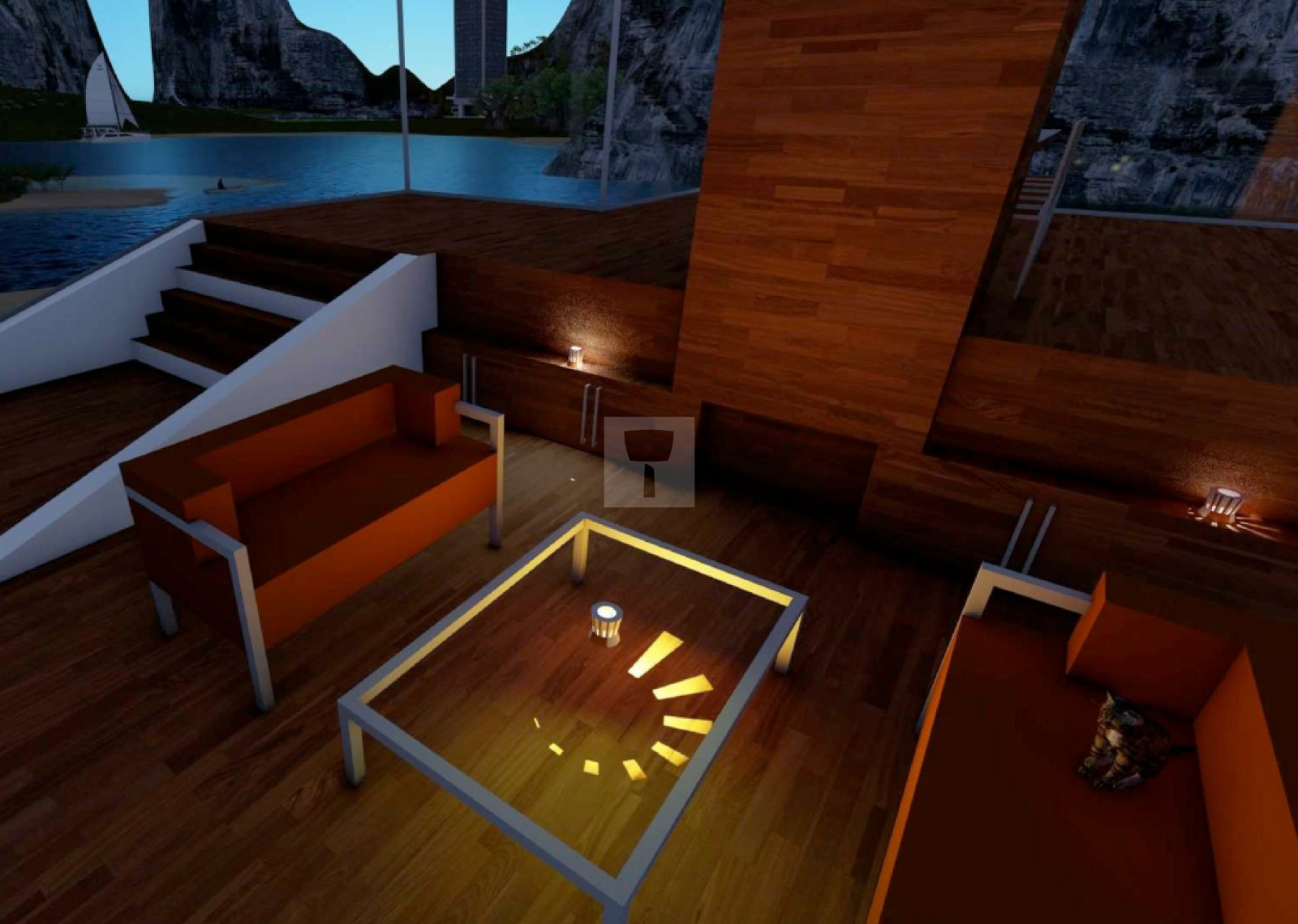
CATEGORY ‘CONSTRUCTION’:
Residence VEB : Krist Michiels – SamArchitecten (Belgium)
The private residence, designed by architects Krist Michels and Seigert Saeren, is located in a protected landscape in the Haspengouw region of Limburg. The renovation of an old farm, which wasn’t protected but considered to be a valuable architectural element in the area, was expanded in an ingenious manner by the architects. They have designed a residence with contemporary features, in accordance with architectural rules and materials of the region.
The new area, consisting of the living room and the master bedroom, has been annexed at the back of the renovated farm. This part, invisible from the street, respects the curves of the terrain, rises at its extreme side and is detached from the old building. In contrast to the brick of the region and the shape of the farm, the annex plays with long lines, large openings and a combination of blue limestone strips with tinted steel. “The ClivEno wallstrips, placed on a ventilated foundation, gives Blue Limestone of Hainaut an even more natural look,” explains architect Krist Michiels. The architects worked in a contemporary fashion by placing the ClivEno strips with free lengths and variable heights of 5, 7 and 10 cm randomly. A modern application of a traditional material that creates the link, but also the contrast with the initial volume of the building. ”The blue-grey tones of blue limestone emphasize the purified vision in a remarkable natural setting”, concludes the architect.
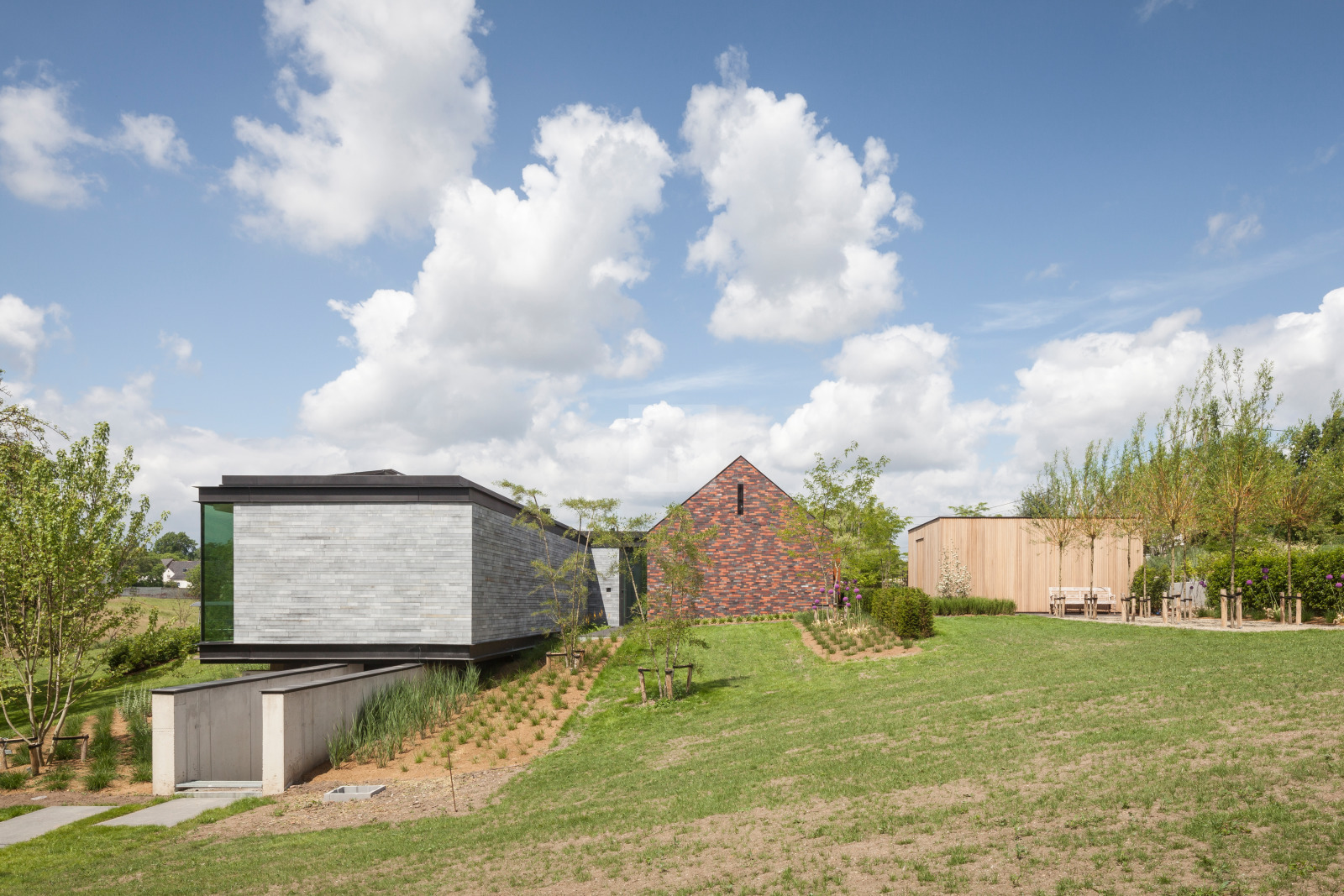
CATEGORY ‘EXTERIOR’:
Square du Rieur and Plumecocq park, Valenciennes: Cabinet Binon (France)
The urban landscape project of Cabinet Binon is part of an initiative to revitalize the park and make it appealing for the Valenciennes residents. The goal is to extend the park to the historic center and create a garden with 5 senses in the place of Square de Rieur, located in the northeast of Valenciennes. The opening of the city and the view on the park - the foundation of this project - revolve around two vast ellipses on both sides of the North-South axis, the backbone of the project that connects the city center visually and physically to the swimming pool. Blue Limestone of Hainaut was used to make the landscaping view gradually changing from mineral to vegetal.
“The first ellipse is located around a monumental fountain in Blue Limestone of Hainaut, symbolizing the entrance to the square and providing a place of contemplation where visitors can sit and reflect surrounded by water, vegetation and mineral elements”, explains the landscape architect David Binon. The fountain with a crescent shape was made of vertical crust plates in blue stone as well as a bench in crust, located along the access path which follows the nature slope of the park. “This offers an elegant contrast between the polished and natural rough side of the stone, resulting from the extraction”, the designer specifies. As the floors around it, the bottom of the fountain has an opus incertum pattern with sawn blue stone plates. The pedestal, on the corner of the fountain, consists of an accumulation of on-sart plates of different sizes. The water coming out of the sculpture falls like a waterfall on the stones. A vegetation of water plants has developed along the line of the crust stone, which contributes to the decorative aspect as well as the purification of the water in the basin.
The floor coverings of the front of the square consist of sawn blue stone plates in an opus incertum pattern, partly placed with grass joints and partly with mortar joints for the central path. The path that passes through the park, towards the second ellipse that closes the garden of the 5 senses, has benches of blocks in blue stone along the way and the park is closed by cleaved posts.
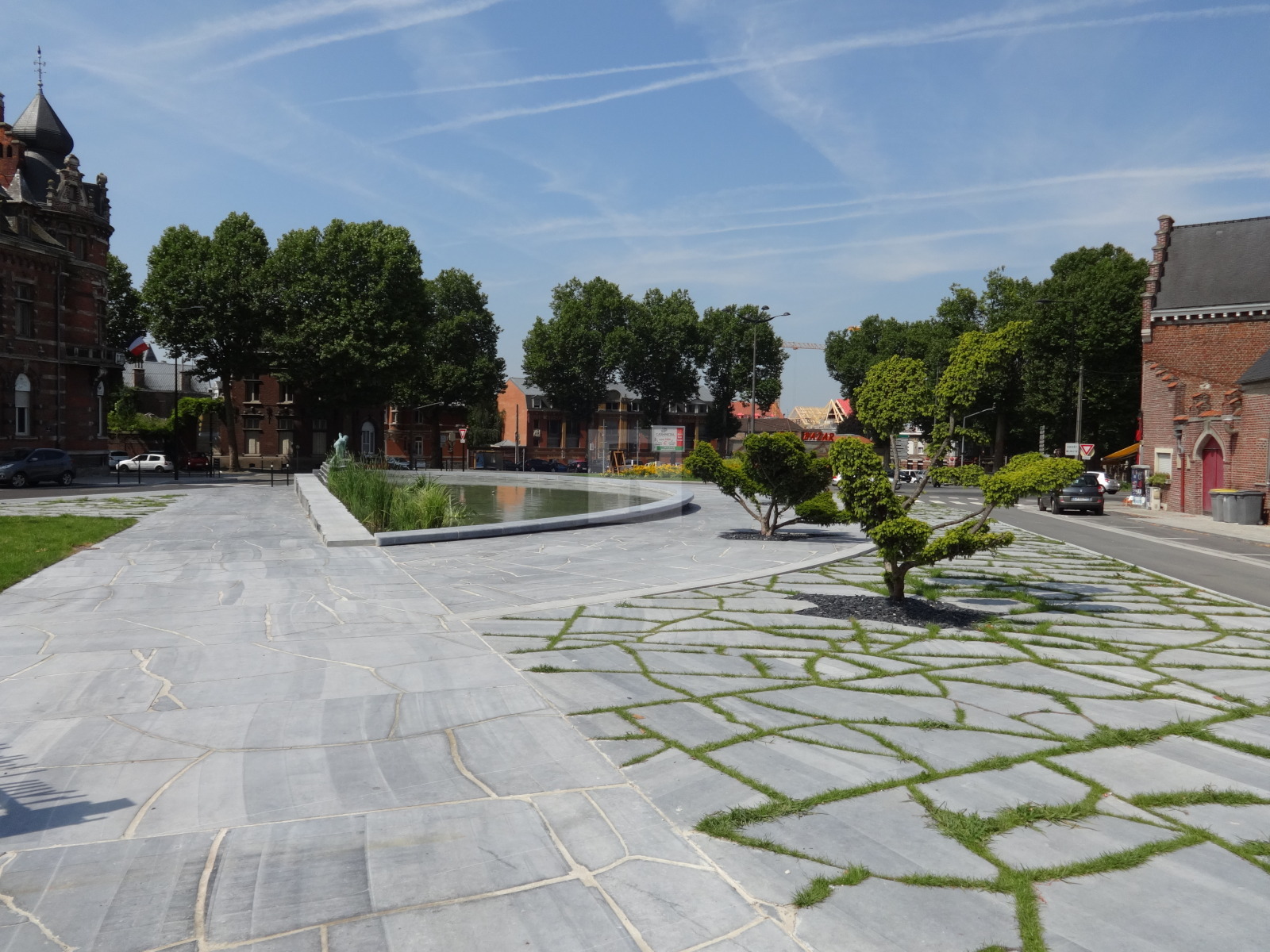
PROJECT OF ALL CATEGORIES COMBINED: ORGINALITY PRICE
Graf : Chanel Kapitanj (Belgium)
The jury of the ‘Blue Stone Awards’ wished to highlight the work of Mrs. Chanel Kapitanj and rewarded the intelligent approach and thorough analysis to find innovative solutions that resulted in multiple, creative and original proposals. One of these concepts was the design of 'sandwich panels' - consisting of Belgian blue limestone plates on both sides of an insulating panel - which can serve as an acoustic barrier for highways, partitions or facades.
The young designer, sensitive to the questions of valorization and upcycling, focused on the essence of the competition by exploring different methods to emphasize the aesthetic and graphic character of the imperfections. Similar to the consumer campaign that convinces consumers that ‘ugly’ fruit and vegetables are just as healthy and tasty, Chanel Kapitanj explains: “In a society of overconsumption, it is important to promote 'waste', which isn’t waste. A product that presents an aesthetic problem has the same foundation. The graphic imperfections give this unique appearance to the natural stone while maintaining its renowned quality.” A conceptual approach that deserves to be highlighted, particularly in this competition.
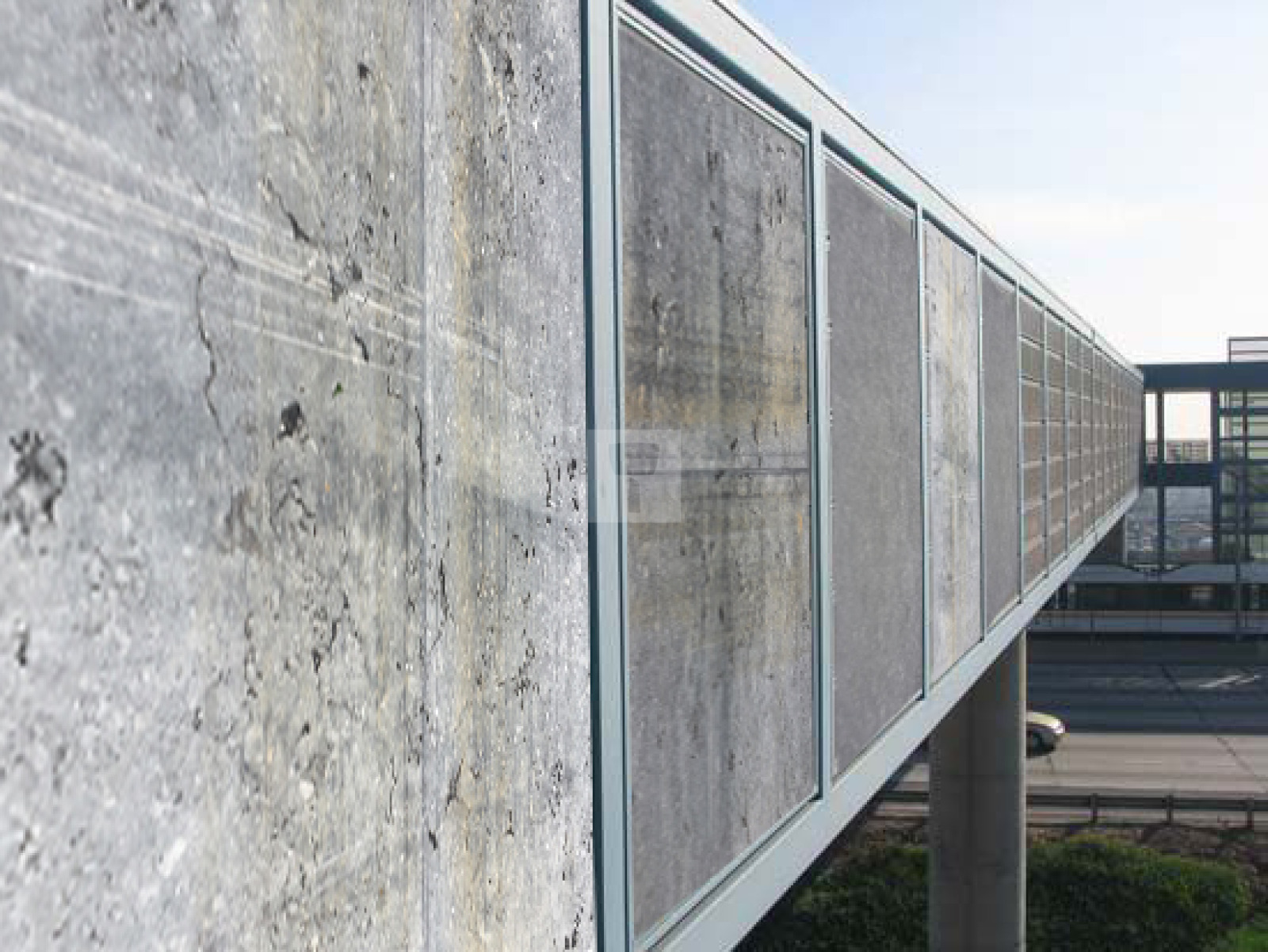
Download images
